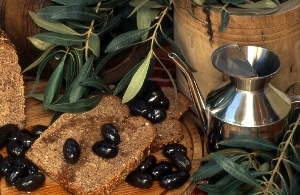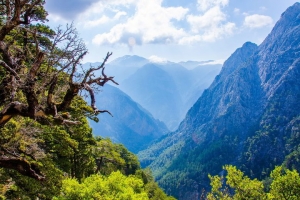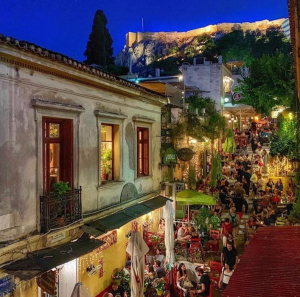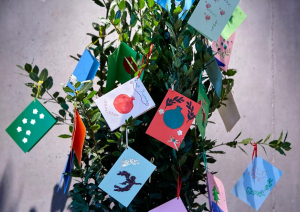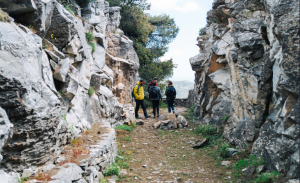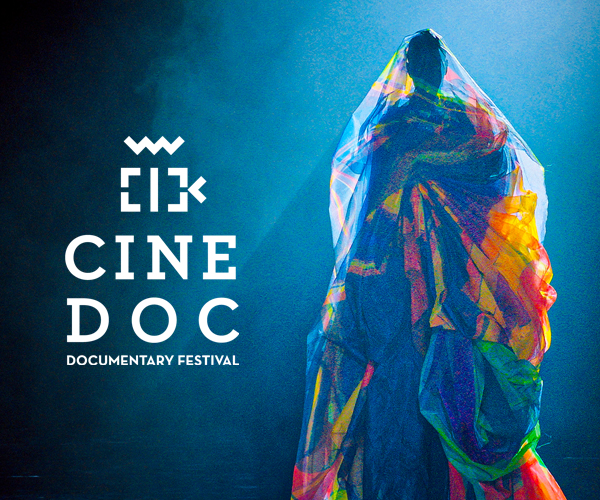XpatAthens
Tuesday, 22 September 2015 07:00
Tourlou Tourlou Briam
As we head into autumn, this dish is perfect for the season.
Tourlou tourlou, which literally means all mixed up, is really the most wonderfully delicious mix up of vegetables! Perfect with fresh veggies and a few simple ingredients and you’re on your way to one of the best traditional vegetable meals in all of Greek cooking.
This dish also known as Briam from the Turkish version and is also very similar to the traditional French dish Ratatouille. Full of flavor and so satisfying, you can enjoy tourlou tourlou hot right from the oven or the next day at room temperature. Serve as a filling meal or as a tasty veggie side dish to just about anything and its a great take for lunch option too!
One of the great things about tourlou tourlou is it's amazingly flexible. This dish can accommodate whatever is in season and can be made with a huge variety of vegetables such as okra, green beans, peas, green peppers, mushrooms - feel free to be creative!
Ingredients
- 2 cups sliced eggplant (approx 2 medium eggplants)
- 2 cups sliced zucchini squash /green or yellow or combination of both (approx 2 medium squash)
- 3 cups sliced potatoes (2 large baking potatoes)
- 1 1/2 cups thinly sliced onions (1 medium sweet white onion)
- 6 large cloves garlic (sliced very thinly)
- 3 cups sliced tomatoes (approx 4 large ripe tomatoes)
- 3 tbsp sliced fresh basil
- 1 cup olive oil
- 1 tsp salt/ 1 tsp fresh ground black pepper
- 2 cups peeled, crushed tomatoes (approx 3 large tomatoes)
- 1/2 cup water
- 1/2 tsp sugar
To read more, including how to make Tourlou Tourlou, please visit: The Greek Vegan
Published in
Greek Food & Diet
Tagged under
Thursday, 19 November 2015 07:00
Greek Traditional Products
Traditional Greek cuisine is based on the pure products from Greek Mother Nature to form a balanced nutritional model that can ensure a better quality of life and physical health. Products with unique quality and unsurpassable nutritional values include; olive and extra virgin olive oil, dairy products, honey, ouzo, fish, juices, water, nuts, wines, mastic from Chios, crocus from Kozani and much more These products have blended together and created a noble cuisine rich in nutritional ingredients, which can satisfy the high gusatory and nutritional needs of modern man.
Let's take a look at some of the highly regarded Greek products:
Olive Oil
As the basis of every recipe found in traditional cuisine, olive oil plays a dominant role in Greek nutritional habits. Greek olive oil is known worldwide for its purity, exceptional taste and high nutritional value. You will find it everywhere - in glass or plastic containers with the words "visrgin" and "extra virgin" printed on them.
Cheese
You will find unique cheeses of exceptional quality in the market, and you should make the effort to try these cheeses, such as kaseri, graviera, kefalotiri, myzithraand metsovone. These cheeses vary according to their origin, taste and name. Some of these cheeses are found throughout the country, while others are locally produced for local consumption. The most famous is of course Greek feta cheese. This is a white semi-soft, heavily salted cheese which is the basic ingredient for the Greek or Horiatiko salad, but it is also used in many other recipes.
Wine
Greece is not only the birthplace of Dionysus (God of Wine), but also the birthplace of wine making. This wine came from the islands of Chios and Thassos and was famous throughout the Ancient world. Historical and social reasons, as well as various natural disasters, were the main reasons why the art of wine making was neglected from the middle of the 19th century up tot he beginning of the 60's. Greek winds are produced from a variety of grapes, many of which are unknown to Western wine lovers.
To read more, please visit: Visit Greece
Published in
Greek Food & Diet
Tagged under
Monday, 01 February 2016 07:00
Mountain Sports: Popular Destinations In Greece
For mountain sports enthusiasts, Greece is the ideal setting for your athletic adventures. Ski centres with pistes of high standads and hospitable facilites, rock climbing in majestic landscapes that will take you all the way to the heavens, dirt roads and mountain forests perfect for mountain biking. What are the most popular destinations in Greece for mountain sports?
Skiing in Greece: Popular pistes
1. Parnassos: The largest and best-equipped ski resort in Greece, near cosmopolitan Arahova and Livadi, at an altitude of 1,600-2,300m. It boasts 19 trails totalling 36km, while the Vakhos and Iniochos pistes are certified by the International Ski Federation (FIS), for the organisation of meets and competitions. In addition, there are seven more snow trails and 8 connecting paths that lead to the black pistes.
2. 3-5 Pigadia: 3-5 Pigadia can be found on the eastern side of Mt Vermio, at an altitude of 1,430-2,005m and surrounded by green forest. It’s famous for its piste named Filippos, the best black run (of extreme difficulty) in Greece, while Aristotelis, at 2,000m long, is certified by the International Ski Federation (FIS) for the Pan-European and World Championships. It also has a separate snowboard park, for snowboarding and freeriding.
3. Karpenisi: One of the largest and most impressive ski centres in Greece can be found at the Velouhi plateau in Karpenissi. Spread over 5,500 sq m, at an altitude of 1,850-2,000m, it boasts 18 slopes. Of these, there is one black slope for experienced skiers and snowboarders.
4. Vasilitsa: The ski resort at Vasilitsa is one of the most famous and popular in Greece, and is located in the heart of the Pindos Mountains, in a majestic landscape (2,150m). It has 18 pistes which total 24km in length, as well as a snowboard park.
Rock climbing in Greece: Popular destinations
1. Meteora: Climbing the Meteora pillars is a truly singular experience. These are long ascents without surplus safeties using natural holds which are good for relative beginners. You’ll be thrilled to discover the ruins of abandoned monasteries and hermits’ shelters in protected niches.
2. Sykia, Ghiona: An impressively sheer slope rises above the village of Sykia, posing its challenge. The object of many a climber’s desire is the vertical rock face from 1,000-2,500m, the Slab of Sykia, which is an excellent test of their skills.
Trekking in Greece: Popular routes
1. Mytikas, Mt Olympus: The classic ascent to the top of Mt Olympus starts from the Prionia refuge at 1,100m. This is the highest spot that you can drive to and if you’re hiking on the E4, you’ll also pass through here from Litochoro and the Epineas Gorge, before continuing up the mountain.
2. Vikos Gorge: One of Europe’s deepest and longest gorges, this is a must for nature lovers. The descent from Monodendri and the ascent to Vikos is steep, but the walk above the Aoos River in the heart of the Vikos-Aoos National Park is fairly even and not too demanding. The six-hour trek is mostly shaded. Ravishing flowers cover the slopes until late spring, and you can even take a dip in icy waters if you’re truly brave.
Mountain biking in Greece: Popular rides
1. Varybobi: On the outskirts of Athens is a mountain bike paradise. Above the former royal estate at an altitude of 320-850m is a perfect pine forest for your thrills and, hopefully, a few, spills.
2. Asopos canal: A canal brings water from the Mornos River to the Asopos River valley. The canal is open and the road by it lays out an attractive and easy bike route.
To read this article in full, please visit: Discover Greece
Published in
Travel Greece
Tagged under
Friday, 14 April 2017 07:00
Aegean Airlines Supports Documenta 14 By Adding Direct Flight From Athens To Kassel
As first official airline partner of the documenta 14 art show, Aegean Airlines has added two direct flights per week between Athens and Kassel, Germany.
“AEGEAN will link the two destinations by including Kassel in its international network, thus making a significant contribution to putting Athens on the map of the international cultural scene,” the airline said in an announcement.
As the official airline partner of documenta 14 and through its new flights, AEGEAN is expected to fly some 1,500 international media representatives to attend the exhibition opening in Athens and more than 8,500 visitors to the Greek capital throughout the duration of the exhibition.
To read this article in full, please visit: Greek Travel Pages
Photo Credit: Greek Travel Pages
Photo Credit: Greek Travel Pages
Published in
International Travel
Tagged under
Thursday, 25 July 2019 02:24
July 25 - A Summer Of Change
Like every major city, Athens faces some problems too. Thankfully, there are people willing to change things for the best! For example, learn all about this team of volunteers which runs a mobile laundry van helping thousands of homeless people across the city, or the first football team consisting of migrant and refugee women!
Please click HERE to view this issue of our newsletter!
Published in
Newsletters
Tagged under
Thursday, 05 December 2019 15:04
Festive Season At The Acropolis Museum
The Acropolis Museum invites you to a festive season full of activities during December 2019. Creative mobile workshops for children, gallery talks for adults, Christmas music from the Jazz Octet, famous musical songs from the S.T.A.B. saxophone quartet and special gifts at the Acropolis Museum Shops, will offer visitors moments to joy and celebration.
Children’s workshop “Festive stories”
What kind of festivals did the ancient Athenians have and for which were the children looking forward to participate? Let’s discover them at the Acropolis Museum and bring to life the emotions that these feasts were giving birth to children and adults. We will create festive sets and happy compositions that will uniquely adorn the Museum.
Days & hours: Saturday 21/12, Sunday 22/12, Saturday 28/12 & Sunday 29/12, 11 a.m., 1 p.m. & 5 p.m. in Greek only.
Duration: 90 mins
Ages: 6-11 years old
Participacion: Participation for children is free. A general admission fee (5€) is required for
parents/escorts
Reservations: For registration, please refer to the Information Desk at the Museum entrance on the same day. First-in first-served (25 children per workshop)
The workshops are held by the Department of Educational Programs – Acropolis Museum and the Department of Information & Education – Acropolis Restoration Service (YSMA).
Gallery talks “The lost statue of Athena Parthenos”
The Acropolis Museum brings to life, digitally, the statue of Athena Parthenos. Made of gold and ivory, this masterpiece was designed by Phidias for the Parthenon. The Museum invites you on a walk of knowledge about its construction materials and techniques, its myths and allegories, its radiance and its adventures.
Days & hours: Saturday 7/12, Saturday 14/12, Saturday 21/12 & Saturday 28/12, at 11 a.m. in English and at 1 p.m. in Greek
Duration: 50 mins
Participation: The gallery talk is free of charge. Only the permanent exhibition ticket is required (5€).
Limited to 30 visitors per session.
For registration, please refer to the Information Desk at the Museum entrance on the same day. First-in first-served.
Gallery talks at the exhibition “Chisel and memory. The contribution of marble craftsmanship to the restoration of the Acropolis monuments”
Duration: 90 mins
Ages: 6-11 years old
Participacion: Participation for children is free. A general admission fee (5€) is required for
parents/escorts
Reservations: For registration, please refer to the Information Desk at the Museum entrance on the same day. First-in first-served (25 children per workshop)
The workshops are held by the Department of Educational Programs – Acropolis Museum and the Department of Information & Education – Acropolis Restoration Service (YSMA).
Gallery talks “The lost statue of Athena Parthenos”
The Acropolis Museum brings to life, digitally, the statue of Athena Parthenos. Made of gold and ivory, this masterpiece was designed by Phidias for the Parthenon. The Museum invites you on a walk of knowledge about its construction materials and techniques, its myths and allegories, its radiance and its adventures.
Days & hours: Saturday 7/12, Saturday 14/12, Saturday 21/12 & Saturday 28/12, at 11 a.m. in English and at 1 p.m. in Greek
Duration: 50 mins
Participation: The gallery talk is free of charge. Only the permanent exhibition ticket is required (5€).
Limited to 30 visitors per session.
For registration, please refer to the Information Desk at the Museum entrance on the same day. First-in first-served.
Gallery talks at the exhibition “Chisel and memory. The contribution of marble craftsmanship to the restoration of the Acropolis monuments”
Visitors will have the opportunity to attend presentations of an exceptional exhibition of photographs of the marble craftsmen of the Acropolis at work.
The temporary exhibition was organized by the Committee for the Conservation of the Acropolis Monuments and the Acropolis Restoration Service (YSMA).
Days & hours: Saturday 14/12, Saturday 21/12 & Saturday 28/12, at 12 noon
Duration: 40 mins
Participation: The gallery talk is free of charge. Limited to 25 visitors per session.
The temporary exhibition was organized by the Committee for the Conservation of the Acropolis Monuments and the Acropolis Restoration Service (YSMA).
Days & hours: Saturday 14/12, Saturday 21/12 & Saturday 28/12, at 12 noon
Duration: 40 mins
Participation: The gallery talk is free of charge. Limited to 25 visitors per session.
For registration, please refer to the Information Desk at the Museum entrance on the same day. First-in first-served.
Music and carols at the Acropolis Museum
On Sunday 22 December, at 12 noon, the Acropolis Museum will host the Jazz Octet of the Athens Military Guard for a music concert at the Museum ground floor, including jazz and Christmas world renowned melodies.
On Monday 23 December, at 12 noon, the Vrakoforoi Cretan Dance Group will sing traditional Christmas carols at the Museum ground floor.
Music and carols at the Acropolis Museum
On Sunday 22 December, at 12 noon, the Acropolis Museum will host the Jazz Octet of the Athens Military Guard for a music concert at the Museum ground floor, including jazz and Christmas world renowned melodies.
On Monday 23 December, at 12 noon, the Vrakoforoi Cretan Dance Group will sing traditional Christmas carols at the Museum ground floor.
On Sunday 29 December, at 12 noon, the Acropolis Museum will host the well-known S.T.A.B. saxophone quartet for a New Year’s music concert at the Museum ground floor, including renowned musical songs.
On Tuesday 31 December, at 12 noon, the Association of Asia Minor “Nees Kydonies” will sing traditional New Year’s carols at the Museum ground floor.
The Acropolis Museum Charm for 2020
According to myth the tortoise won the race over the hare, the former with his patience and dedication winning over the flippant self confidence of the hare. The ancients considered that the benevolent tortoise protected them from the evil eye and that its blood was an antidote to poison. A tortoise lead weight featuring a tortoise in relief of the 3rd to 1st century BC inspired the Museum’s charm of 2020. You can see the original exhibit in showcase 2 (no.11) of the Gallery of the Slopes at the Acropolis Museum.
Festive meals and Christmas mood at the restaurant
During the festive season, the Museum restaurant will serve traditional festive meals and sweets. Christmas jazz nights are also taking place every Friday night by famous jazz music ensembles. For reservations please contact the restaurant during Museum opening hours on +30 210 9000915.
On Tuesday 31 December, at 12 noon, the Association of Asia Minor “Nees Kydonies” will sing traditional New Year’s carols at the Museum ground floor.
The Acropolis Museum Charm for 2020
According to myth the tortoise won the race over the hare, the former with his patience and dedication winning over the flippant self confidence of the hare. The ancients considered that the benevolent tortoise protected them from the evil eye and that its blood was an antidote to poison. A tortoise lead weight featuring a tortoise in relief of the 3rd to 1st century BC inspired the Museum’s charm of 2020. You can see the original exhibit in showcase 2 (no.11) of the Gallery of the Slopes at the Acropolis Museum.
Festive meals and Christmas mood at the restaurant
During the festive season, the Museum restaurant will serve traditional festive meals and sweets. Christmas jazz nights are also taking place every Friday night by famous jazz music ensembles. For reservations please contact the restaurant during Museum opening hours on +30 210 9000915.
Published in
Community
Tagged under
Wednesday, 08 April 2020 17:15
Son Pa Atenas ~ A Song Dedicated To Athens
The Cuban-Greek musical partnership Santa Palabra, known for their vibrant live performances around Athens and their Latin rhythms, have composed a song Son Pa Atenas dedicated to the ancient city of Athens - described as 'the immortal and eternal Greek capital.'
Son Pa Atenas is an irresistible mix of authentic Latin melodies and meaningful lyrics, giving insight into Greece's rich history and at the same time getting everyone dancing! The music video shows the artists singing and dancing against the backdrop of Athens' most iconic landmarks, such as the Parthenon and the Hellenic Parliament, reminding us how beautiful the city is.
Son Pa Atenas is an irresistible mix of authentic Latin melodies and meaningful lyrics, giving insight into Greece's rich history and at the same time getting everyone dancing! The music video shows the artists singing and dancing against the backdrop of Athens' most iconic landmarks, such as the Parthenon and the Hellenic Parliament, reminding us how beautiful the city is.
Fun and unbeat this song will surely make your heart beat to the rhythm!
Published in
City Discovery
Tagged under
Thursday, 06 May 2021 14:00
Marble Marvels: A Historic Hike on Mount Penteli
Mount Penteli is one of the four ranges that cradle Athens and at 1,006 metres, is the second highest summit after Mount Parnitha.
The mountain is world-famous for its marble which has long been prized for its purity. The marble quarries there operated from around the 6th century B.C. until the 1940s and yielded the vast bulk of the material used to build the Acropolis and the ancient city of Athens.
We’re headed for the Dionysos open-air marble museum, a reconstruction complete with crumbling miner’s shacks, tool sheds, and dramatic scree mounds, to drive home this mountain’s mighty marble legacy.
During the four hours or so we are up here, we encounter totally different landscapes; from gorgeous open panoramas and austere quarries to woodland meadows carpeted with wildflowers (and rare butterflies). There’s also a delightful trio of storybook chapels the size of Wendy houses, decorated with holy icons, and springwater taps where we top up our bottles with sweet mountain water.
It’s also about what we don’t see. As in other people. Barring a few faded red markings on rocks, Penteli is not a sign-posted route. It helps keep the crowds at bay.
After about 45 minutes, we emerge into a natural clearing backed by an imposing wall of multi-coloured marble rock. This is the climbing section of Penteli. Known as Dionysos, it’s among the most popular in Attica (wider Athens) and one of the few places in Greece where you can pit yourself against sheer marble precipices around 15-20m high.
We’re now standing at the mouth of a steep ramp-like track scattered with marble shrapnel. The path plunges like a black ski-run towards the lush foothills below. This is the platform they used to send marble blocks the size of a car down the mountain. They’d tie them up with cables; then release them slowly on ropes.
I try (and fail) to visualise the Herculean Endeavour of shifting all those mammoth marble bricks from here to the Parthenon building site, some 25 kilometres away.
Next, we stop near the stony reconstruction of what looks like an open-air “staff canteen” built into the sloping quarry, adjacent to the old tool construction area. That’s where they would place the dynamite to break up the rock in modern times. In ancient Greece, they soaked flints in water and stuck them into holes where they would expand and break up the marble.
Many of Penteli’s quarry workers hailed from Paros island. The Parians were good workers, apparently, and had a knack with marble (the legendary Venus de Milo was sculpted from Paros marble).
The Dionysos marble museum isn’t really a museum in the strictest sense. There are no maps or organised exhibits. It’s more of an atmospheric theatre set, built atop the retired ancient quarry to represent everyday working life.
We continue up the steady incline; marble debris clinking musically underfoot, like pebbles knocking together on a shore.
To read this article in full, please visit: thisisathens.org
Next, we stop near the stony reconstruction of what looks like an open-air “staff canteen” built into the sloping quarry, adjacent to the old tool construction area. That’s where they would place the dynamite to break up the rock in modern times. In ancient Greece, they soaked flints in water and stuck them into holes where they would expand and break up the marble.
Many of Penteli’s quarry workers hailed from Paros island. The Parians were good workers, apparently, and had a knack with marble (the legendary Venus de Milo was sculpted from Paros marble).
The Dionysos marble museum isn’t really a museum in the strictest sense. There are no maps or organised exhibits. It’s more of an atmospheric theatre set, built atop the retired ancient quarry to represent everyday working life.
We continue up the steady incline; marble debris clinking musically underfoot, like pebbles knocking together on a shore.
To read this article in full, please visit: thisisathens.org
Photo by: Thomas Gravanis
Thank you This is Athens for your contribution as an XpatAthens Partner.
Whether you've just arrived in town – or have been here for years – Athens always has new secrets to share!
This is Athens is the official guide to this captivating city of ancient energies and booming urban culture. Compiled by a team of specialist local writers, This is Athens brings you an authentic and intimate portrait of a living Athens beyond the guidebooks – along with daily curated listings of all the best events and great weekend inspiration all-year round. From must-know neighbourhoods and emerging art hubs, to gourmet hotspots, cool shopping and the buzziest bars, This is Athens will help you to get the most out of living in Athens!
Thank you This is Athens for your contribution as an XpatAthens Partner.
Published in
City Discovery
Tagged under
Wednesday, 19 February 2025 07:00
Apokries (Carnival) In Greece
In Greece, the word "apokries" carries a rich cultural significance, translating to "no more meat" (αποχή από κρέας – apo-kreas). It heralds the vibrant carnival season, deeply rooted in Orthodox traditions and ancient festivities, marking a time of revelry and anticipation before the solemnity of Lent.
Dating back to ancient Greece, apokries celebrations were intertwined with the worship of Dionysos, the God of Wine and Feast, symbolizing the transition from winter's grip to the awakening of spring. Today, this tradition lives on, blending Orthodox customs with echoes of antiquity.
The carnival season typically spans ten weeks before Greek Orthodox Easter, culminating in the weekend preceding "Clean Monday," or Ash Monday, which signals the commencement of Lent. Throughout this period, communities across Greece come alive with a flurry of festivities, each carrying its own unique customs and flavors.
The carnival kicks off with a week of indulgence, free from fasting, leading up to Meatfare Sunday. This day marks the last opportunity for meat consumption before the Lenten fast begins. The preceding Thursday, known as Tsiknopempti (Charred, Smoky, or Barbeque Thursday), ignites a carnivalesque atmosphere as the scent of grilled meat permeates the air. Families and friends gather in taverns or backyards, indulging in sumptuous meat feasts and merry-making.
As the carnival reaches its climax, the focus shifts to Cheesefare Sunday, or Tyrofagos, where dairy products take center stage. Parades and masquerade parties fill the streets, reviving age-old customs and traditions unique to each region. From elaborate costumes to spirited dances, carnival celebrations encapsulate the essence of Greek cultural heritage, bringing communities together in joyous camaraderie.
Beyond the fun, Apokries offers a glimpse into Greece's rich tapestry of history and tradition. It's a time to savor the pleasures of life before embracing the solemnity of Lent, a reminder of the cyclical nature of time and the enduring spirit of resilience. So, whether you find yourself in Athens or a quaint village in the countryside, immerse yourself in the magic of apokries. Experience the pulsating rhythms, taste the flavors of tradition, and join in the jubilant festivities that define this enchanting season in Greece.
Published in
Greek Traditions
Tagged under
Wednesday, 20 November 2024 15:02
Balancing Parenting & Extracurricular Activities
Parenting in today’s world can often feel like juggling flaming swords, especially when extracurricular activities enter the mix. From soccer practices and dance recitals to coding clubs and art classes, the options are endless, and so are the logistics.
While extracurricular activities can enrich a child’s development and provide essential life skills, they can also overwhelm families if not managed wisely. Here are some tips to help parents navigate this busy landscape while maintaining their sanity.
1. Prioritize & Choose Wisely
Children may want to try everything, and it’s natural for parents to want to support their enthusiasm. However, overloading their schedules can lead to burnout for both kids and parents.
- Focus on Interests: Encourage your child to pick one or two activities they are genuinely passionate about.
- Consider Age & Development: Younger children may need more downtime, while older kids may thrive on structured commitments.
- Set Limits: A manageable schedule ensures kids have time for schoolwork, family, and free play.
2. Plan & Organize
Effective planning is the backbone of managing extracurricular activities.
- Create a Family Calendar: Use digital tools or a physical planner to track commitments, ensuring you don’t double-book or miss an event.
- Coordinate with Other Parents: Carpooling can save time and reduce stress.
- Prepare in Advance: Keep gear and uniforms organized and ready to go to avoid last-minute scrambles.
3. Communicate with Your Child
Extracurricular activities should be enjoyable, not a source of stress.
- Check In Regularly: Ask your child how they feel about their commitments. If they seem overwhelmed, it may be time to scale back.
- Encourage Balance: Teach them the importance of balancing activities with rest and unstructured time.
4. Make Time for Family
With packed schedules, family time can often take a back seat. Make an effort to prioritize moments together.
- Family Meals: Even with busy evenings, try to have at least a few meals together each week to reconnect.
- Quality Over Quantity: Whether it’s a weekend hike or a movie night, make the time you spend together meaningful.
5. Recognize Your Own Limits
Parents often bear the brunt of extracurricular logistics. It’s important to acknowledge your boundaries.
- Ask for Help: Don’t hesitate to enlist other family members or friends for support.
- Set Realistic Expectations: You can’t be everywhere at once; sometimes, you’ll have to make tough choices.
- Prioritize Self-Care: Taking care of yourself ensures you have the energy to care for your family.
6. Emphasize Quality, Not Quantity
Remember, the goal of extracurricular activities is to enrich your child’s life, not to fill every moment with structured tasks.
- Focus on Personal Growth: Whether it’s learning teamwork or building resilience, what matters is how the activity benefits your child’s development.
- Celebrate Achievements: Show your support by attending events and celebrating milestones, no matter how small.
7. Be Flexible & Adapt
Schedules and interests will evolve as your child grows. Stay flexible and be ready to adjust as needed.
- Reassess Annually: Each year, evaluate which activities are worth continuing and which can be dropped.
- Be Open to Change: If an activity no longer serves your child’s interests or wellbeing, it’s okay to move on.
The Bigger Picture
Extracurricular activities are just one piece of the parenting puzzle. By managing them effectively, parents can help their children enjoy fulfilling experiences while maintaining a balanced, happy family life. Remember, it’s not about doing it all but about doing what works best for your family.
Parenting is a journey, and each step is an opportunity to learn and grow together. Take a deep breath, keep perspective, and embrace the beautiful chaos!
Published in
Mindful Reads & News
Tagged under


